The mission of NSTA is to promote excellence and innovation in science teaching and learning for all.
Future NSTA Conferences
STEM Forum & Expo
2017 Fall Conferences
National Conference
Follow NSTA
By Cindy Workosky
Posted on 2017-05-24
Four years ago, I moved from teaching middle school science to teaching grades 2–5 STEAM (science, technology, engineering, art, and mathematics) labs. One of the biggest challenges I faced was limited lab time in our elementary school. Because we shared instructional time with social studies, I was only able to meet with students for two 40-minute periods a week for half the year.
I had many other challenges as well. I had to adjust my planning for younger students, and learn to work effectively with co-teachers whose main focus was English language arts (ELA) and mathematics. Elementary science had been taught from dog-eared textbooks that were older than the students we were teaching, and teachers had relied heavily on worksheets and recall assessments. I knew three-dimensional instruction—as promoted in A Framework for K–12 Science Education (Framework) and the Next Generation Science Standards (NGSS)—presented a daunting paradigm shift for teachers, but I was confident the new standards would yield significant benefits for student engagement and learning.
I think that using the three dimensions helps me maximize student learning. I plan lab investigations, problem-based learning projects, and engineering design challenges to help students apply and extend their classroom learning as they engage in science and engineering practices to solve problems. Crosscutting concepts, in particular, provide an essential, highly useful schema for intentional three-dimensional planning because they offer a big-picture perspective that helps me plan instruction with recurring themes as students’ progress through elementary science. According to the Framework, “Explicit reference to the concepts, as well as their emergence in multiple disciplinary contexts, can help students develop a cumulative, coherent, and usable understanding of science and engineering.”
Crosscutting concepts make intuitive sense to my youngest students, especially the concept of structure and function. For example, my second-grade unit on interdependent relationships in ecosystems features a modeling project to address 2-LS2-2, “Develop a simple model that mimics the function of an animal in dispersing seeds or pollinating plants.” We begin by viewing a video of a dog running through a field, collecting burrs on its coat, then shaking them off. I ask students if they have ever walked through the woods or a field and found burrs stuck to their socks or shoes. I inquire, “How do you think the burr sticks to your socks?”
We examine seeds with hand lenses and a 3D microscope, and view online images of seeds with hooks and spikes. I then ask why students think a plant would produce seeds with hook and spike structures. (Note: Before this lab lesson, students had explored seed dispersal by wind and water, and had discussed the importance of seeds traveling away from their parent plant for greater access to resources like water, sunlight, and space for their roots to spread.)
Students observe that the hooks help the seed get carried to a new spot where it can have a better chance of growing, and I introduce the term function. Function is the structure’s job: how it works to help the plant. We also examine examples of seeds surrounded by fruit and discuss how fruit is a structure that functions to attract an animal, helping a seed get dispersed. Of course, this produces much hilarity in the room as students realize how the seed eventually gets deposited in a new location, accompanied by a useful helping of fertilizer.
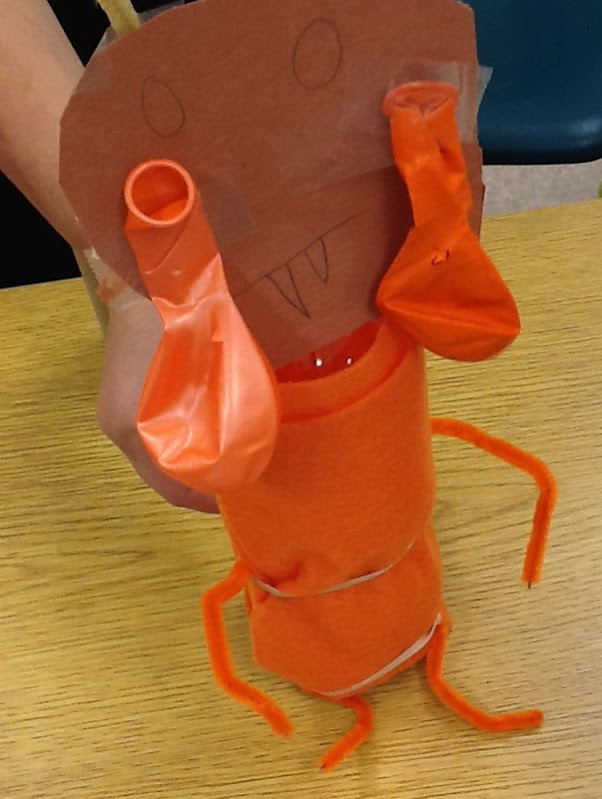
Squirrel with cheek pouch structures that function to carry nuts
I introduce an engineering design challenge: “Use the engineering design process to design, construct, evaluate, and present a simple model that mimics the function of an animal in dispersing a plant’s seeds. Your model must show the animal and seed structures (parts) and show how they function (work) to make seed dispersal possible.”
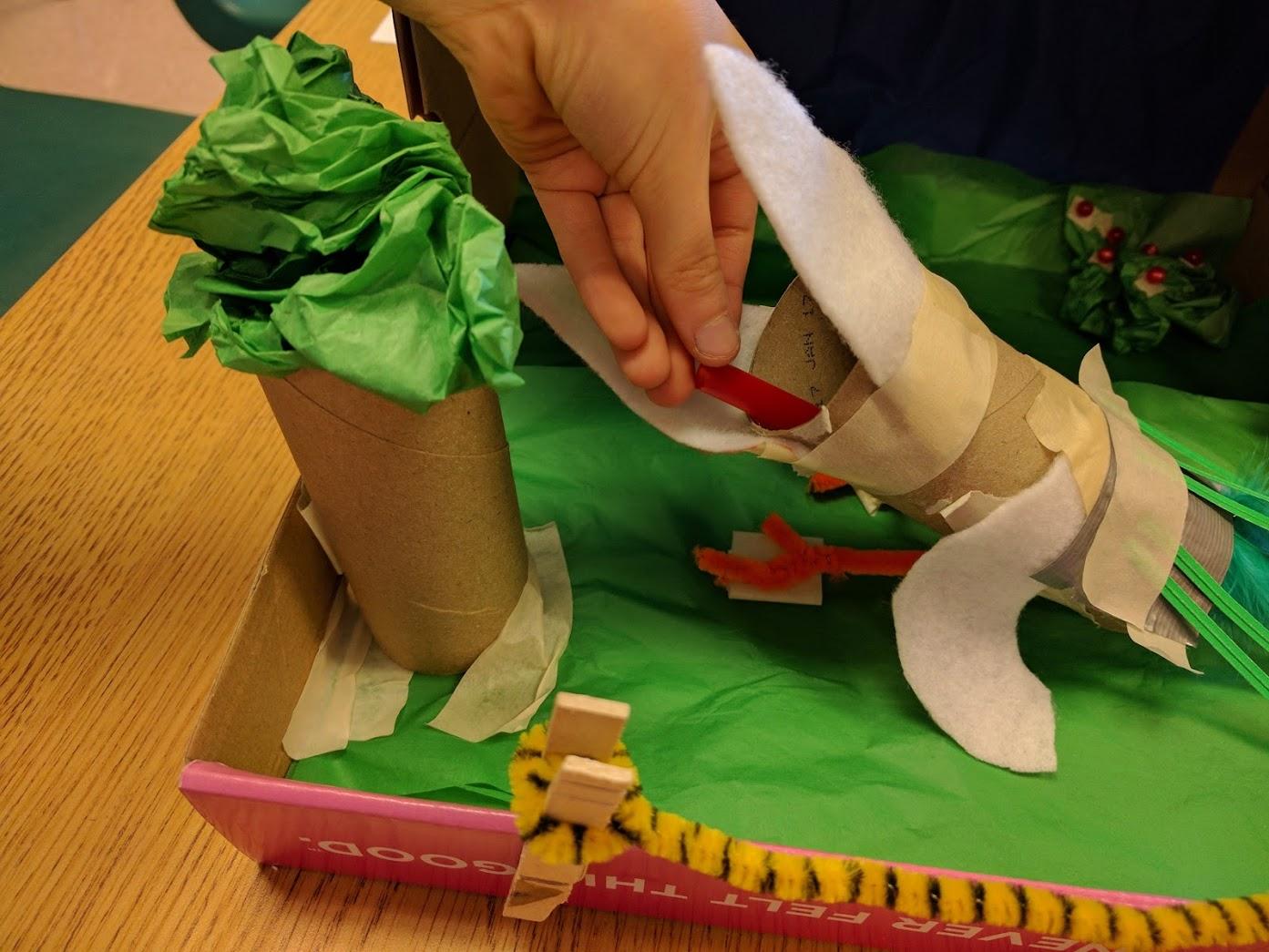
Bird disperses berry seeds through a drinking straw digestive tube
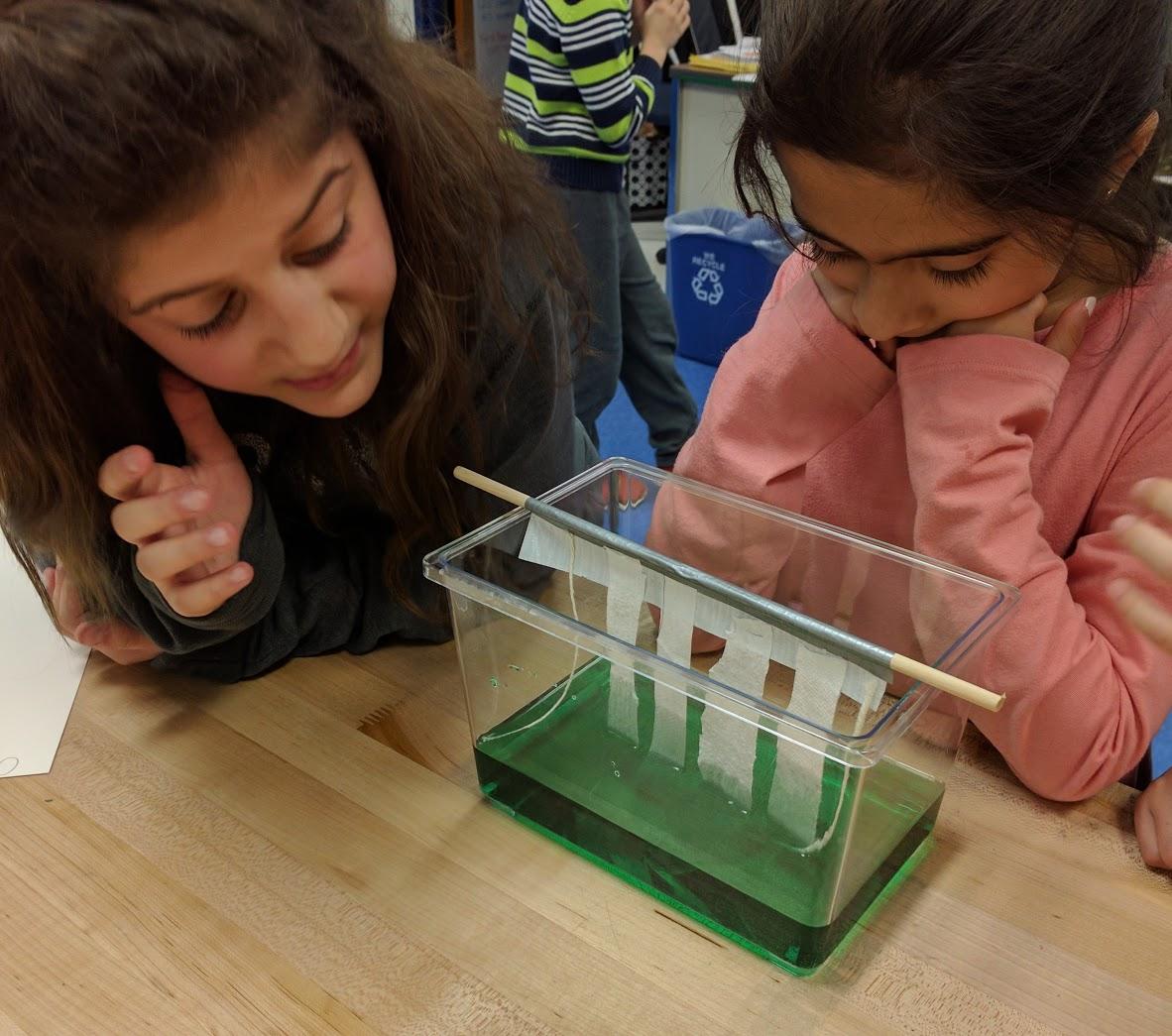
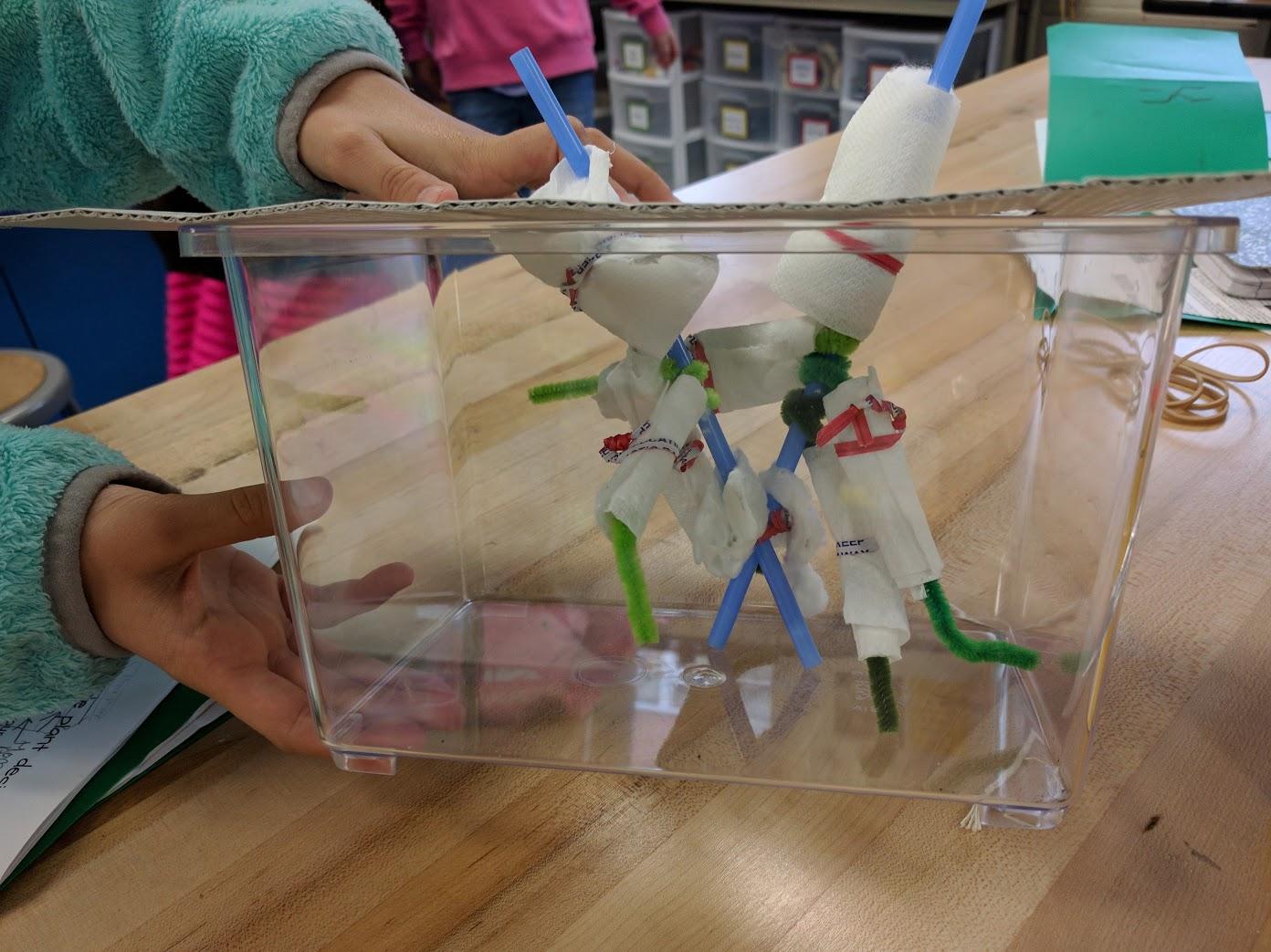
Students explore structure and function in third grade as they design a desert plant with adaptations to absorb and store water during a flash flood and to prevent water loss that occurs through evaporation. Before designing their plant, teams test various materials for speed of water absorption and structural integrity when wet.
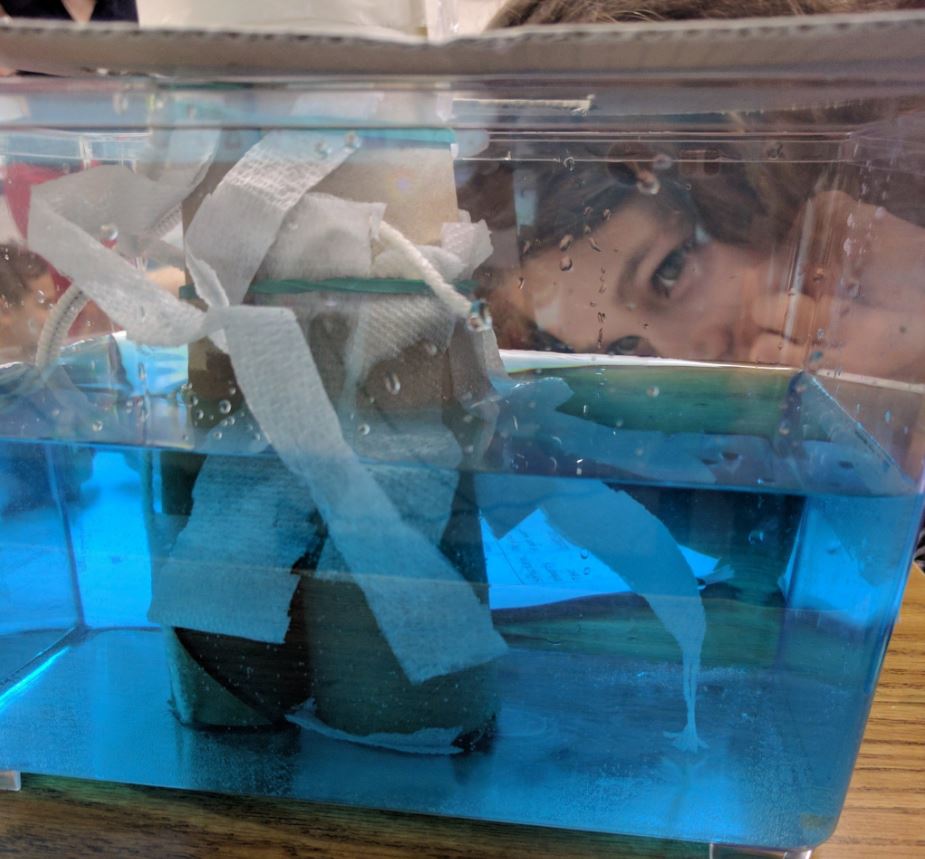
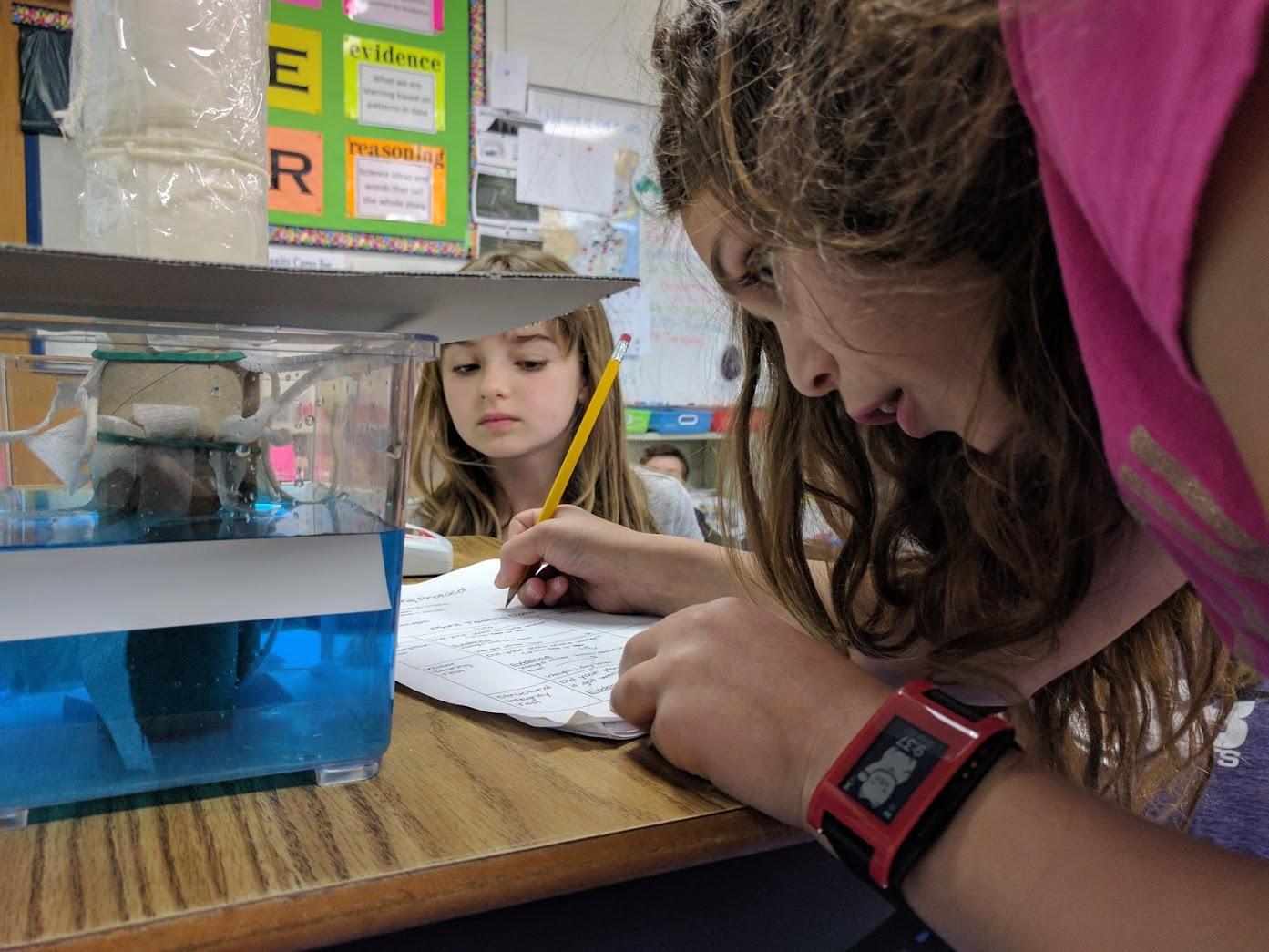
Students wrapped their plant’s above ground structures in waxed paper or plastic wrap to function to prevent evaporation.
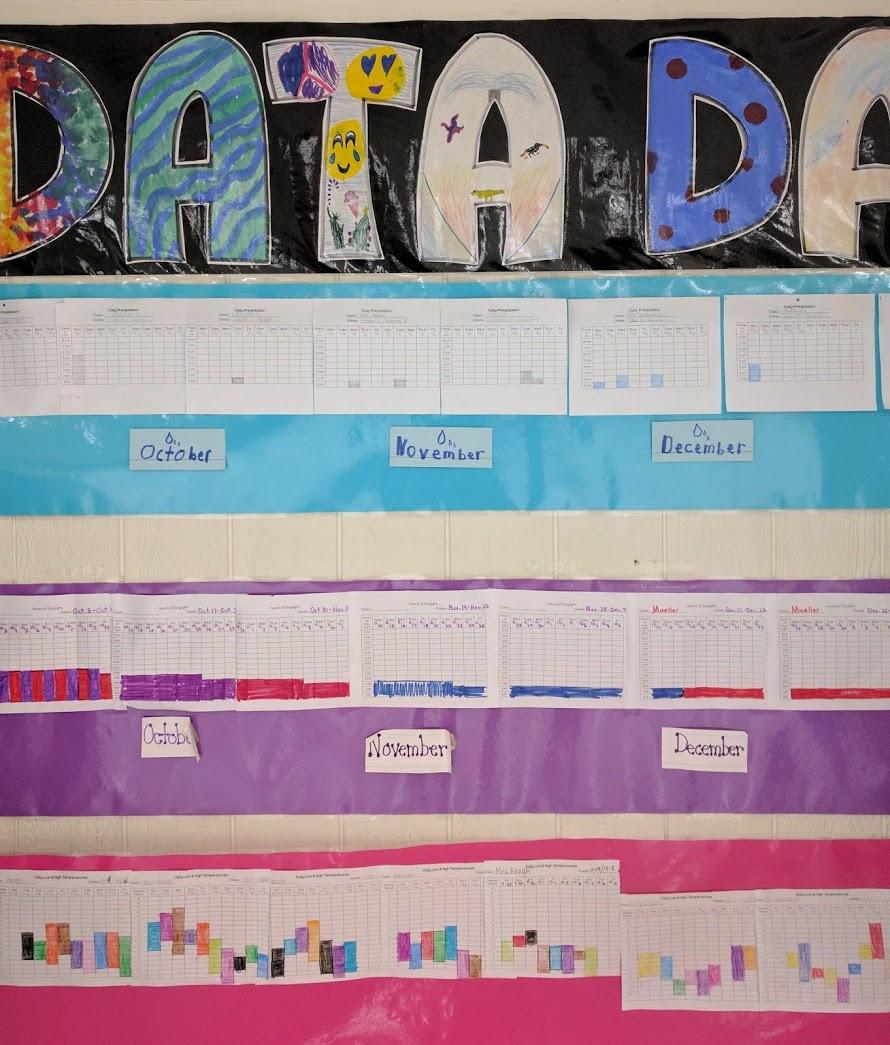
Data dashboard
Our Primary School’s Data Dashboard is posted prominently on a cafeteria wall. Each grade is responsible for recording daily precipitation (grade 2), hours of daylight (grade 1), and high and low temperatures (kindergarten). Teachers bring their students to the cafeteria with clipboards to ask questions and look for patterns, a crosscutting concept. Opportunities abound for discussing additional crosscutting concepts at our Data Dashboard, such as cause and effect and stability and change.
Recently, I participated in a Twitter chat on crosscutting concepts #elngsschat, one of my favorite Twitter chats for sharing ideas for elementary science teaching. Participants are enthusiastic, passionate science educators, eager to share their ideas, successes, and failures. Elementary science teachers can use this chat and hashtag to build a supportive PLN—especially helpful if you teach in a small district with limited science specialist teaching staff. As we continue to progress in our NGSS implementation journey, I look forward to hearing other educators’ experiences with teaching crosscutting concepts at all grade levels.
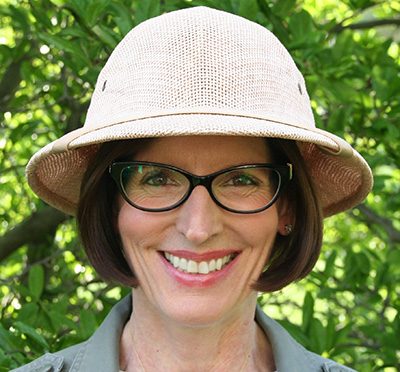
Beth Topinka
Beth Topinka is the S.T.E.A.M. lab teacher for grades 2–5 at Millstone Township School District in central New Jersey. She’s a vocal advocate for interdisciplinary, problem-based learning, and loves to create and share engaging 3D investigations and engineering challenges. She is a Science Friday Educator Collaborator, and was recently named a Science Channel Science Superhero. Topinka was selected as a state finalist for the 2016 Presidential Awards for Excellence in Mathematics and Science Teaching.
The mission of NSTA is to promote excellence and innovation in science teaching and learning for all.
Future NSTA Conferences
National Conference
Follow NSTA
Disclaimer: The views expressed in this blog post are those of the author(s) and do not necessarily reflect the official position of the National Science Teaching Association (NSTA).
Biology Crosscutting Concepts Disciplinary Core Ideas Multilingual Learners Equity General Science Inquiry Labs Learning Progression Lesson Plans Life Science Literacy New Science Teachers NGSS Phenomena Preservice Science Education Science and Engineering Practices Teacher Preparation Teaching Strategies Three-Dimensional Learning Early Childhood Elementary Preschool